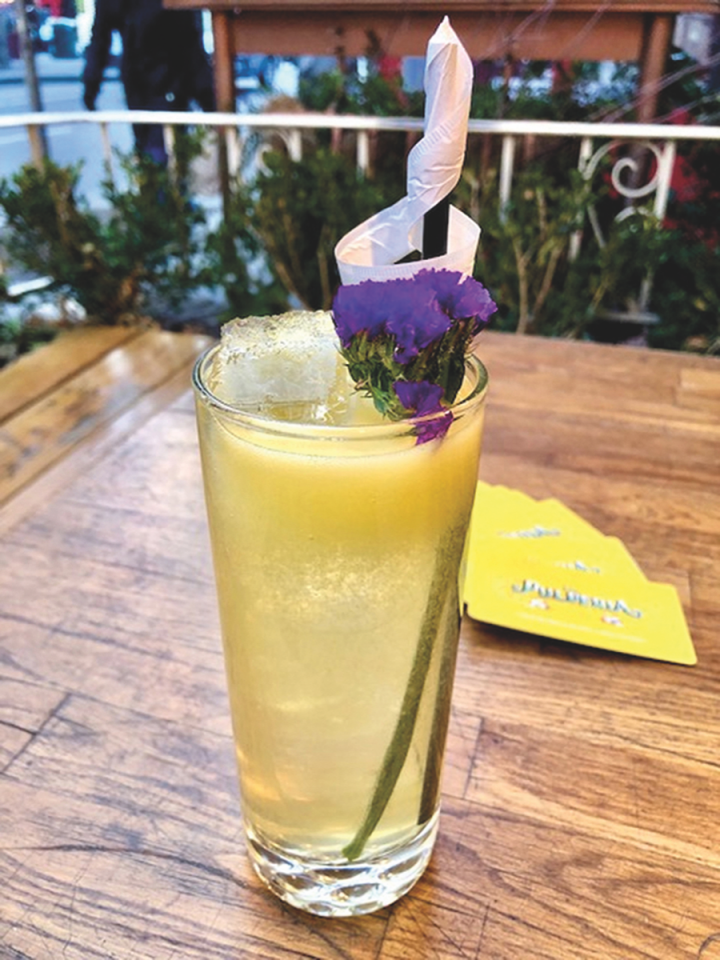
More widely known for their holistic healing properties, aloe and eucalyptus can be interesting additions behind the bar. Aloe vera, a tropical succulent plant, has long been a staple in skincare products, while eucalyptus, a tree native to Australia, is often found in cold remedies, home gardens, and bug repellents. Both botanicals, however, are starting to make inroads within the mixology community as bartenders look for unique ingredients to make their drinks stand out.
Daniel Villanueva, a mixologist for the New York City Latin restaurant concept La Pulperia, which has locations in Manhattan’s Hell’s Kitchen and Midtown East neighborhoods, uses both aloe and eucalyptus in drinks. He says the plants are versatile, noting that aloe gel and eucalyptus oil can be directly infused into spirits or mixed into purées and syrups. Their botanical flavors can complement a variety of spirits, from vodka, gin, and Pisco to rum, Tequila, and mezcal, he adds.
La Pulperia offers drinks like the Aloe and Eucalyptus ($14), mixing Hendrick’s gin with a house-made pineapple and ginger juice that’s infused with aloe, a custom-made eucalyptus tea syrup, and fresh lime juice, garnished with a lavender flower, and the Rosa Picante ($14), comprising Código 1530 Rosa Tequila infused in-house with eucalyptus oil and jalapeño, Cointreau liqueur, agave nectar, and lemon and lime juices, served in a salt-rimmed glass.
“Aloe and eucalyptus contribute a unique flavor and aroma to drinks, and can also affect the color and texture,” Villanueva says. He adds that using products already enhanced with aloe or eucalyptus can work well, but he prefers to make his own infusions from scratch. “Aloe and eucalyptus products are unique and, if made from scratch, can be healthier and manipulated more to better suit a bartender’s needs,” he notes.
The California-made Chareau Aloe liqueur launched in 2013 and has been steadily growing ever since. The spirit is available in roughly 20 states nationwide, providing bartenders with an easy way to experiment with aloe’s flavor. Mike Jones, the head bartender at Sable Kitchen & Bar in Chicago’s Kimpton Hotel Palomar, frequently uses Chareau in drinks and also plays with fresh aloe. His Seymour Station ($14), which was on a previous warm-weather menu and may return this summer, is made with Suerte Blanco Tequila, Chareau Aloe liqueur, lime juice, muddled cherry tomatoes, and salt, garnished with bubble tea-style aloe vera pearls and watermelon. “Chareau has big notes of mint and herbs,” Jones explains. “The fresh aloe is diced into small pieces and adds an unexpected texture to the cocktail. Its flavor is incredibly mild, with a hint of sweetness.”
Meanwhile, Chicago bartender Eden Laurin, a managing partner for The Violet Hour, added an aloe drink to the spring cocktail menu at Dove’s Luncheonette, a diner-style venue in the Windy City’s Wicker Park neighborhood. The Hello Sun ($10), which debuted in March, is made with Banhez mezcal, La Favorite Blanc Coeur de Canne Rhum Agricole, house-made aloe-honey syrup, cucumber, and mint. “We use aloe to create a syrup,” Laurin says. “We cook it down to a reduction and sweeten it with honey, then mix it with rhum agricole. Aloe adds a softness and terroir that isn’t overly demanding to the rest of the drink’s ingredients. It also adds floral notes and aromatics, boosting whatever it’s mixed with. Additionally, it’s economical, easy to work with, and has great health benefits. It’s a perfect spring flavor.”